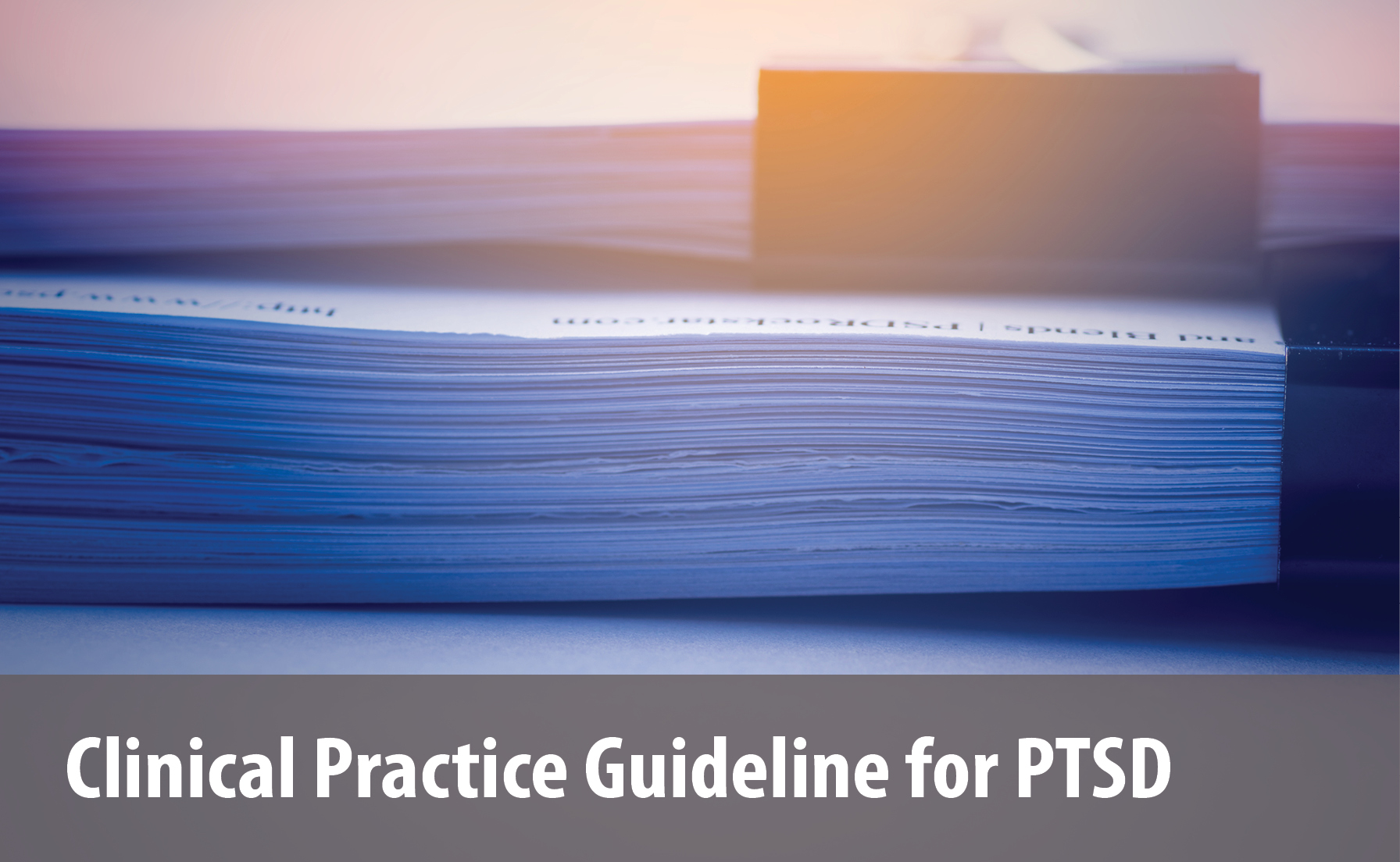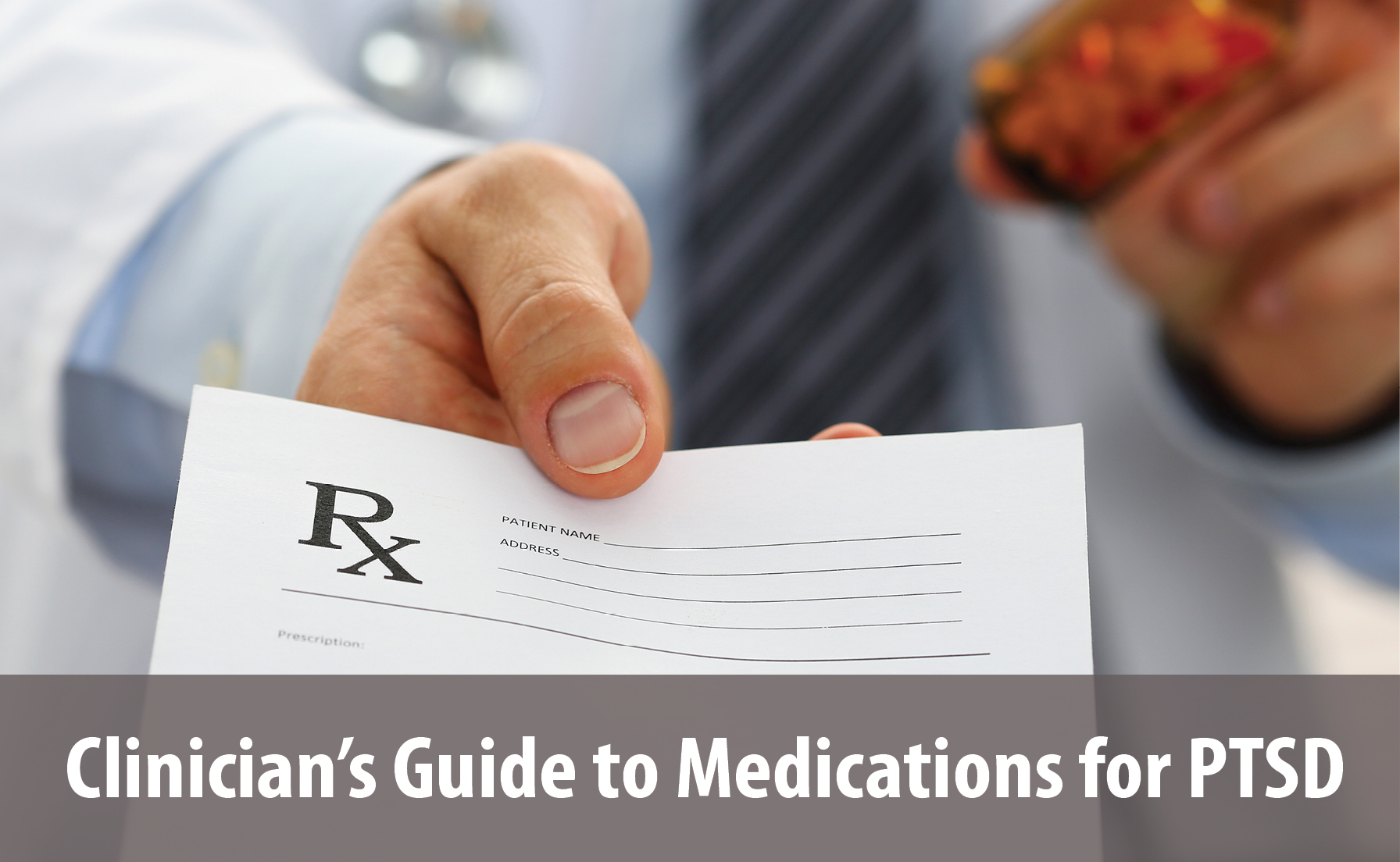PTSD: National Center for PTSD
Complex PTSD: Assessment and Treatment
Complex PTSD: Assessment and Treatment
This article discusses clinically relevant information about complex PTSD (CPTSD), including symptoms, assessment, and treatment. Given that the ICD-11 definition of CPTSD is now the one most widely used internationally, this article will focus on assessment and treatment according to this definition. A brief history of the development of CPTSD is included. For a more in-depth review of the history of the diagnosis, see Complex PTSD: History and Definitions.
History and Current Definitions
The concept of complex posttraumatic stress disorder (CPTSD) was suggested shortly after the introduction of PTSD in the DSM-III (1980) to capture the long-term consequences of prolonged, repeated, early life interpersonal trauma (1,2). Symptoms were proposed to include difficulties that went beyond DSM-III PTSD symptoms, such as difficulties with affect and impulse regulation, amnesia or dissociation, a sense of being permanently damaged, inability to trust, revictimization, somatization, or deep despair.
CPTSD was first formalized as a diagnosis in the ICD-11 (3). The ICD-11 does not require a specific type of trauma for the diagnosis, because research has found that CPTSD can happen after any trauma, though it is more likely after chronic, repeated interpersonal traumas (4). The ICD-11 includes a diagnosis of PTSD that constitutes three components: reliving in the here and now, avoidance of trauma material, and a heightened sense of current threat. Complex PTSD can be diagnosed when a person meets criteria for PTSD, in addition to "disturbances in self-organization" (DSO) defined as significant difficulties in affect regulation, self-concept, and relationships. (View the full criteria for ICD-11 CPTSD ). Therefore, a person can only be diagnosed with PTSD or CPTSD, not both, in the ICD-11.
). Therefore, a person can only be diagnosed with PTSD or CPTSD, not both, in the ICD-11.
In contrast, the DSM-5 does not include CPTSD as a diagnosis; rather, the symptoms of CPTSD are to some extent captured in the diagnosis of PTSD, which has been expanded between DSM-III and DSM-5, and in the dissociative subtype (included in DSM-5).
Assessment
The main assessment tool for complex PTSD is the International Trauma Questionnaire (ITQ; 5). This self-report questionnaire assesses for both ICD-11 PTSD and CPTSD, with 6 items assessing PTSD and 6 assessing the three types of disturbances of self-organization (DSO). Those 6 DSO items are:
Table 1. Assessment of Disturbances of Self-Organization
| DSO Constructs | Corresponding ITQ Items |
|---|---|
| Emotion dysregulation |
|
| Negative self-concept |
|
| Disturbances in relationships |
|
To meet criteria for ICD-11 CPTSD, a person must meet criteria for ICD-11 PTSD plus each of the 3 types of DSO symptoms (endorsing at least one item in each domain), and at least one indication of problems in functioning related to those symptoms. (View the full criteria for ICD-11 CPTSD .)
.)
Because this self-report measure assesses symptoms from each DSO domain but not all symptoms listed in the ICD-11, it should be considered to yield a "provisional" diagnosis. There is also a forthcoming clinician interview to diagnose ICD-11 CPTSD, the International Trauma Interview, but this is still in the process of being validated in English and is not currently available except in a research context.
Assessment Considerations
It is important to point out that there is conceptual overlap between the CPTSD items on the ITQ and the DSM-5's definition of PTSD. The Clinician-Administered PTSD Scale (CAPS-5) and Posttraumatic Stress Disorder Checklist (PCL-5) are recommended for thorough DSM-5 PTSD assessment. For clinicians using the DSM-5, there may not be as much utility to assessing for CPTSD in addition to DSM-5 PTSD.
Regardless of which diagnostic system is used, when a clinician suspects CPTSD (or a client requests an assessment of it), it will also be helpful to conduct a differential diagnosis considering DSM-5 PTSD with dissociative subtype and common comorbidities such as major depressive disorder, borderline personality disorder, and substance use disorder.
Given that there is increasing information (some inaccurate) about CPTSD in public media, patients may specifically ask whether they have CPTSD based on information they have found independently. Further, some may find the idea of complex trauma or complex PTSD to validate their experiences. Clinicians should be sensitive to invalidation while also being able to discuss overlap between DSM-5 PTSD and ICD-11 PTSD, as appropriate.
Treatment
Given that the diagnosis of ICD-11 CPTSD is relatively "young" there have been relatively few treatment studies of ICD-11 CPTSD specifically. We begin by discussing the arguments historically made in favor of phase-based treatment, followed by an overview of the few studies to date.
Phase-based or modular treatment
Starting with earlier conceptualizations of CPTSD, there was often an argument that treatment for CPTSD needed to be phased, including (generally) a stage of safety, alliance, and skill-building; followed by a phase of trauma processing; and finally, a phase of moving toward a life less affected by trauma consequences (6). Some have argued that DSO symptoms may interfere with the stress-tolerance and relational functioning needed to face trauma within a therapeutic relationship, so that having a skills-building phase enables enhanced alliance, less dropout and better engagement with later trauma processing (7).
The most commonly studied phase-based treatment is Skills Training in Affective and Interpersonal Regulation (STAIR). STAIR was originally developed to build affect regulation and interpersonal skills for individuals who had been sexually abused; it was later tested more broadly among people with PTSD, sometimes stand-alone and sometimes followed by a form of narrative trauma exposure therapy (see Cloitre et al., 2006 (8), 2020 (9), 2024 (10)). There is now a format with 4 modules, each focusing on one of the ICD-11 CPTSD symptom types (so far with positive results compared only to treatment as usual, not to an active treatment; 11). This type of modular treatment is designed to allow flexibility in the timing and choice of treatment targets (12).
Others have argued that whether there is a diagnosis of PTSD or CPTSD, treating with a trauma-focused treatment is still the best course of action. By this argument, having a skills-focused phase prior to trauma treatment may be an unnecessary delay in addressing the root of the patient's symptoms (13).
Studies to date
A few studies of patients with DSM-5 PTSD—and interventions largely created to treat PTSD—have included the ITQ and so yield some information about how current treatment approaches work for those with versus without CPTSD.
Two studies of phase-based PTSD treatment have included the ITQ. Both utilized variations of STAIR and found no advantage of phase-based over standard PTSD treatment. Both studies compared Prolonged Exposure (PE) alone to STAIR followed by exposure therapy (14-16). Those who had CPTSD (versus PTSD) started and ended treatment with higher symptoms, but they improved by a similar amount (15). Improvements in CPTSD symptoms were comparable whether treated with PE, STAIR alone, or STAIR plus exposure therapy (16).
Two program evaluations have examined the effect of non-phase-based intensive PTSD treatment programs. An 8-day program combined PE and Eye Movement Desensitization and Reprocessing (EMDR) for adults with DSM-5 PTSD (17). Compared to patients with PTSD alone, those with CPTSD had higher PTSD severity at baseline. However, both those with and without CPTSD had strong and comparable decreases in both PTSD and CPTSD. Likewise, findings in a smaller intensive 5-day program for individuals with DSM-5 PTSD indicated that those with CPTSD had higher baseline self-reported PTSD scores but had larger decreases in symptoms through treatment (18). Although it is unknown whether a phase-based approach would have worked better, in these samples a non-phased-based PTSD treatment worked well, regardless of ICD-11 diagnosis.
Summary
Having a clear operationalization of CPTSD (including a definition and standardized measures such as the ITQ) has been a major advance in the field. Early studies—with DSM-5 PTSD populations and interventions--have not found an advantage so far for phase-based treatments for people who have CPTSD or have found that people with CPTSD benefit as much as those with PTSD from standard PTSD treatments. Future treatment studies may examine whether, in fact, different treatment approaches are needed for different diagnoses. Ideally studies will enroll patients with CPTSD to compare treatments specifically developed for CPTSD (such as phase-based or modular treatments) to standard PTSD treatments, in order to more clearly examine whether a diagnosis of CPTSD should lead to different treatment recommendations than for PTSD. At present, there is encouraging evidence that people with CPTSD can benefit from existing PTSD treatments.
Further Reading on Clinical Practice for CPTSD
- For more information on how the ITQ differentiates people with PTSD from those with CPTSD, see Redican et al., 2021 (19).
- For information on the International Trauma Interview (ITI), these articles describe validation of the measure in various languages: Bachem et al., 2024 (20); Bondiers et al., 2019 (21); Gelezelyte et al., 2022 (22).
- For an overview of CPTSD assessments see Seiler et al., 2023 (23).
- Investigators have also started to develop brief screening instruments for CPTSD (e.g., Litvin et al., 2024 (24)).
Karatzias and Cloitre (2019; 25) and Karatzias et al. (2023; 12) proposed that it will be fruitful to study whether modular or more tailored CPTSD-specific treatments are more effective than standard PTSD treatments for those with ICD-11 PTSD and CPTSD. For instance, they suggest that future research could compare the effectiveness in populations of individuals with CPTSD of:
- Standard PTSD treatment vs. standard treatment integrated with other interventions targeting DSO.
- Standard PTSD treatment vs. flexible modular treatment. Various study designs could help to examine:
- Whether fewer sessions or modules may be needed for ICD-11 PTSD vs. CPTSD.
- Whether a flexible modular treatment (including patient choice of module sequence) is particularly effective for individuals with ICD-11 CPTSD vs. PTSD.
For an alternative approach to complex trauma that focuses on the experience of certain types of trauma rather than the ICD-11 diagnosis of CPTSD, see the American Psychological Association and International Society for the Study of Trauma and Dissociation (Division 56) resource: APA Guidelines for Working with Adults with Complex Trauma Histories (26).
References
- Herman, J. L. (1992a). Complex PTSD: A syndrome in survivors of prolonged and repeated trauma. Journal of Traumatic Stress, 5(3), 377-391. https://doi.org/10.1002/jts.249005305
- van der Kolk, B. A., Pelcovitz, D., Roth, S., Mandel, R. S., McFarlane, A., & Herman, J. (1996). Dissociation, affect dysregulation and somatization: The complex nature of adaptation to trauma. American Journal of Psychiatry, 153(7), 83-93. https://doi.org/10.117/ajp.153.7.83
- World Health Organization. (2022). ICD-11: International classification of diseases (11th revision). https://icd.who.int/
- Brewin, C. R., Cloitre, M., Hyland, P., Shevlin, M., Maercker, A., Bryant, R. A., Humayun, A., Jones, L. M., Kagee, A., Rousseau, C., Somasundaram, D., Suzuki, Y., Wessely, S., van Ommeren, M., & Reed, G. M. (2017). A review of current evidence regarding the ICD-11 proposals for diagnosing PTSD and complex PTSD. Clinical Psychology Review, 58, 1-15. https://doi.org/10.1016/j.cpr.2017.09.001
- Cloitre, M., Shevlin, M., Brewin, C. R., Bisson, J. I., Roberts, N. P., Maercker, A., Karatzias, T. & Hyland, P. (2018). The International Trauma Questionnaire: Development of a selfâ€report measure of ICDâ€11 PTSD and complex PTSD. Acta Psychiatrica Scandinavica, 138(6), 536-546. https://doi.org/10.1111/acps.12956
- Herman, J. (1992b). Trauma and recovery: The aftermath of violence from domestic abuse to political terror. Basic Books.
- Cloitre, M., Koenen, K. C., Cohen, L. R., & Han, H. (2002). Skills training in affective and interpersonal regulation followed by exposure: A phase-based treatment for PTSD related to childhood abuse. Journal of Consulting and Clinical Psychology, 70(5), 1067-1074. https://doi.org/10.1037//0022-006X.70.5.1067
- Cloitre, M., Cohen, L. R., & Koenen, K. C. (2006). Treating survivors of childhood abuse: Psychotherapy for the interrupted life. Guilford Press.
- Cloitre, M., Cohen, L. R., Ortigo, K. M., Jackson, C., & Koenen, K. C. (2020). Treating survivors of childhood abuse and interpersonal trauma: STAIR narrative therapy. Guilford Publications.
- Cloitre, M., Morabito, D., Macia, K., Speicher, S., Froelich, J., Webster, K., Prins, A., Villasenor, D., Bauer, A., Jackson, C., Fabricant, L., Wiltsey-Stirman, S., & Morland, L. (2024). A home-based telehealth randomized controlled trial of Skills Training in Affective and Interpersonal Regulation versus Present-centered Therapy for women Veterans who have experienced military sexual trauma. Journal of Consulting and Clinical Psychology, 92(5), 261-274. https://doi.org/10.1037/ccp0000872
- Karatzias, T., Shevlin, M., Cloitre, M., Busuttil, W., Graham, K., Hendrikx, L., Hyland, P., Biscoe, N., & Murphy, D. (2024). Enhanced Skills Training in Affective and Interpersonal Regulation versus treatment as usual for ICD-11 complex PTSD: A pilot randomised controlled trial (the RESTORE trial). Psychotherapy and Psychosomatics, 93(3), 203-215. https://doi.org/10.1159/000584428
- Karatzias, T., Mc Glanaghy, E., & Cloitre, M. (2023). Enhanced skills training in affective and Interpersonal regulation (ESTAIR): a new modular treatment for ICD-11 complex posttraumatic stress disorder (CPTSD). Brain Sciences, 13(9), 1300. https://doi.org/10.3390/brainsci13091300
- De Jongh, A. D., Resick, P. A., Zoellner, L. A., Van Minnen, A., Lee, C. W., Monson, C. M., Foa, E. B., Wheeler, K., ten Broeke, E., Feeny, H., Rauch, S. A. M., Chard, K. M., Mueser, K. T., Sloan, D. M., van der Gaag, M., Rothbaum, B. O., Neuner, F., de Roos, C., Jejenkamp, L. M. J., Rosner, R., & Bicanic, I. A. E. (2016). Critical analysis of the current treatment guidelines for complex PTSD in adults. Depression and Anxiety, 33(5), 359-369. https://doi.org/10.1002/da.22469
- Oprel, D. A., Hoeboer, C. M., Schoorl, M., Kleine, R. A. D., Cloitre, M., Wigard, I. G., van Minnen, A., & van der Does, W. (2021). Effect of Prolonged Exposure, intensified Prolonged Exposure and STAIR+ + Prolonged Exposure in patients with PTSD related to childhood abuse: A randomized controlled trial. European Journal of Psychotraumatology, 12(1), 1851511. https://doi.org/10.1080/20008198.2020.1851511
- Hoeboer, C. M., de Kleine, R. A., Oprel, D. A., Schoorl, M., van der Does, W., & van Minnen, A. (2021). Does complex PTSD predict or moderate treatment outcomes of three variants of exposure therapy? Journal of Anxiety Disorders, 80, 102388. https://doi.org/10.1016/j.janxdis.2021.102388
- Sele, P., Hoffart, A., Cloitre, M., Hembree, E., & Øktedalen, T. (2023). Comparing phase-based treatment, prolonged exposure, and skills-training for complex posttraumatic stress disorder: A randomized controlled trial. Journal of Anxiety Disorders, 100, 102786. https://doi.org/10.1016/j.janxdis.2023.102786
- Voorendonk, E.M., De Jongh, A., Rozendaal, L., & van Minnen, A (2020). Trauma-focused treatment outcome for complex PTSD patients: Results of an intensive treatment programme, European Journal of Psychotraumatology, 11(1), 1783955. https://doi.org/10.1080/20008198.2020.1783955
- Zepeda Méndez, M., Nijdam, M. J., ter Heide, F. J. J., van der Aa, N., & Olff, M. (2024). Response of patients with complex forms of PTSD to highly intensive trauma treatment: A clinical cohort study. Psychological Trauma: Theory, Research, Practice, and Policy. Advance online publication. https://doi.org/10.1037/tra0001747
- Redican, E., Nolan, E., Hyland, P., Cloitre, M., McBride, O., Karatzias, T., Murphy, J., & Shevlin, M. (2021). A systematic literature review of factor analytic and mixture models of ICD-11 PTSD and CPTSD using the International Trauma Questionnaire. Journal of Anxiety Disorders, 79, 102381. https://doi.org/10.1016/j.janxdis.2021.102381
- Bachem, R., Maercker, A., Levin, Y., Köhler, K., Willmund, G., Bohus, M., Roepke, S., Schoofs, N., Priebe, K., WüFlfing, F., Schmahl, C., Stadtmann, M. P., Rau, H., & Augsburger, M. (2024). Assessing complex PTSD and PTSD: Validation of the German version of the International Trauma Interview (ITI). European Journal of Psychotraumatology, 15(1), 2344364. https://doi.org/10.1080/20008066.202.2344364
- Bondjers, K., Hyland, P., Roberts, N. P., Bisson, J. I., Willebrand, M., & Arnberg, F. K. (2019). Validation of a clinician-administered diagnostic measure of ICD-11 PTSD and complex PTSD: The International Trauma Interview in a Swedish sample. European Journal of Psychotraumatology, 10(1), 1665617. https://doi.org/10.1080/20008198.2019.1665617
- Gelezelyte, O., Roberts, N. P., Kvedaraite, M., Bisson, J. I., Brewin, C. R., Cloitre, M., Kairyte, A., Karatzias, T., Shevlin, M., & Kazlauskas, E. (2022). Validation of the international trauma interview (ITI) for the clinical assessment of ICD-11 posttraumatic stress disorder (PTSD) and complex PTSD (CPTSD) in a Lithuanian sample. European Journal of Psychotraumatology, 13(1), 2037905. https://doi.org/10.1080/20008198.2022.2037905
- Seiler, N., Davoodi, K., Keem, M., & Das, S. (2023). Assessment tools for complex post traumatic stress disorder: A systematic review. International Journal of Psychiatry in Clinical Practice, 27(3), 292-300. https://doi.org/10.1080/13651501.2023.2197965
- Litvin, J. M., Kaminski, P. L., & Ryals, A. (2024). Development of the complex trauma screener: A brief measure of ID-11 PTSD and complex PTSD. Psychiatry Research, 334,115819. https://doi.org/10.1016/j.psychres.202.115819
- Karatzias, T. & Cloitre, M. (2019). Treating adults with complex posttraumatic stress disorder using a modular approach to treatment: Rationale, evidence, and directions for future research. Journal of Traumatic Stress, 32(6), 870-876. https://doi.org/10.1002/jts22457
- American Psychological Association. (2024). Guidelines for working with adults with complex trauma histories. Retrieved from https://www.apa.org/practice/guidelines/adults-complex-trauma-histories.pdf
You May Also Be Interested In

VA/DoD Clinical Practice Guideline for PTSD (2023)
Get information on evidence-based treatment recommendations for PTSD.

Clinician's Guide to Medications for PTSD
Get key information and guidance on the best medications for PTSD.
























